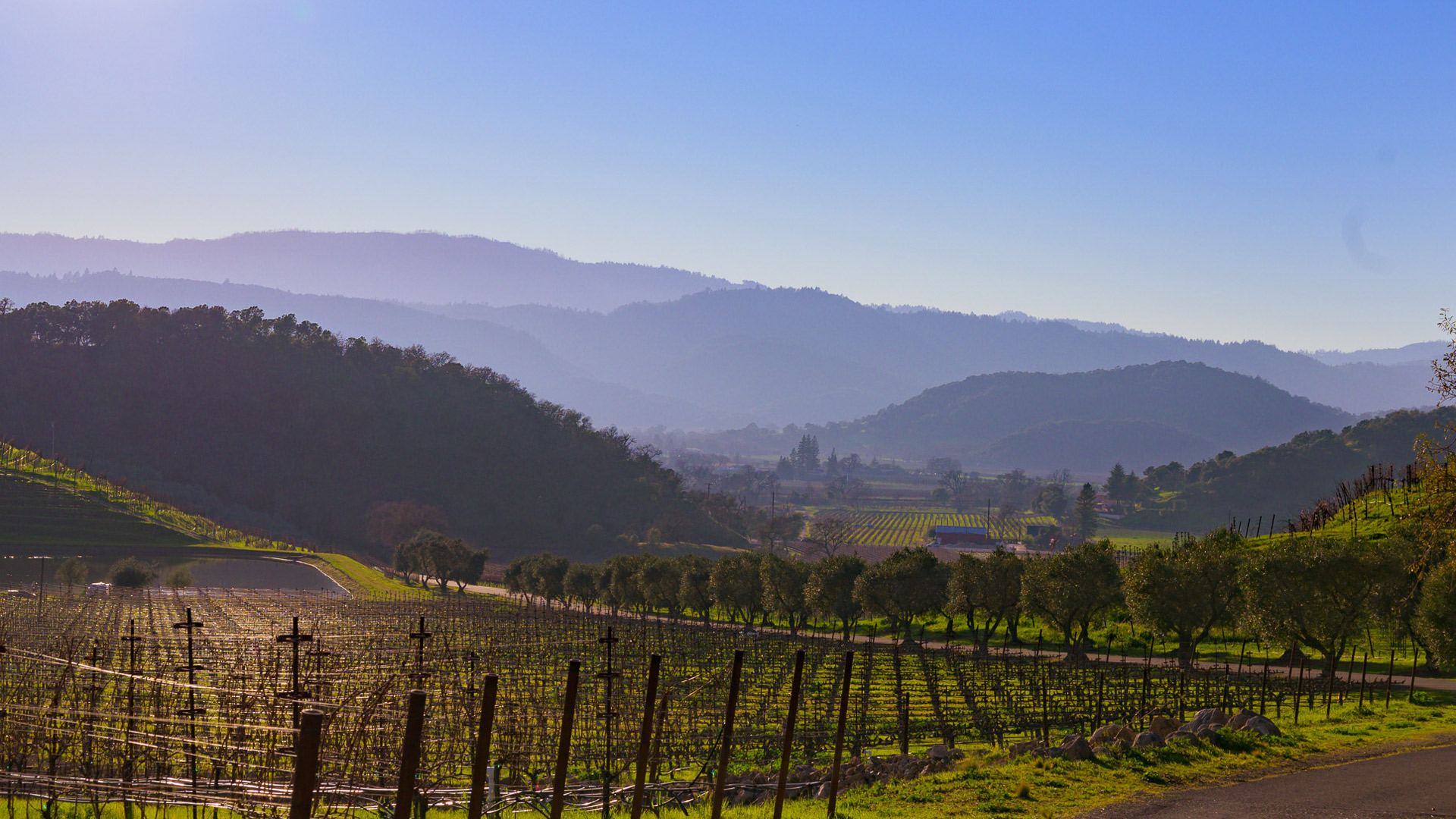Nose
Aromas of pomegranate, black cherry,
potpourri, and a slightly dusty, herbal component.
Palate
The palate shows cherry, cranberry,
and juicy raspberry flavors, along with a mineral, almost saline quality that
combines with mouth-watering acidity. Firm tannin provides a beautiful frame for
the wine, carrying the flavors through a long, lush finish.
Growing Conditions
When our Russian River Vineyard was planted in 1997 by Anne Moller-Racke and Joe
Nugent, 11 acres were planted to Dijon clones 115 and 667. In 2008 we decided to
plant 5 more acres on an adjacent plot, this time to Pommard clone. The idea was that
in these slightly more gravelly soils, the Pommard clone would thrive and produce an
elegant, perfumed wine to play off of the rich, powerful dark fruit flavors produced by
the Dijon clones. We named this block of Pommard clone “Ten Oaks” after the ten
majestic trees that border it on two sides.
Harvest
By 2015 California was well into its five-year drought, and we saw essentially no rain during the summer
and fall. Following the trend of 2014, budbreak was very early, and the season was well underway by
mid-March. Growers were fortunate with similar conditions in 2014, but in 2015 our luck ran out and
the early flowering in April coincided with some very unsettled weather. Seesawing temperatures, high
winds, and abrupt changes from foggy and cloudy to sunny and calm were frequent for nearly six weeks.
These wild swings led to shatter as flowering was interrupted, and some vineyards saw crops reduced by
as much as 75%. At Donum we were relatively fortunate, averaging only about 20% loss across all
blocks. This weather gave way to a fairly mild and even summer until August, when heat spikes returned
and we saw several spikes in which temperatures approached triple digits. This can lead to some difficult
picking decisions, as it is always risky to leave crop that is almost ripe hanging through such extreme heat.
Once again we were perhaps more fortunate than some of our colleagues, and our ripening schedule
lined-up such that we were able to harvest some blocks just before each heat spike, while the rest were
able to hang through the heat. Overall the quality was very high in 2015, and the wines have plenty of
structure indicating they should age well..
Bottling
BOTTLING DATE: January 23, 2017.
Winemaking
The Ten Oaks is the only one of our Pinot Noirs that includes whole-bunches in the fermentation, which
provide a subtle floral and herbal note to the finished wine, along with a moderate increase in tannin. In
2015 about 80% of the fruit was de-stemmed, with the remaining 20% included as whole clusters. The
must cold-soaked for eight days before fermentation began naturally as the temperature of the must
increased. The fermentation proceeded rapidly, lasting only about five days, during which time the must
was pumped-over twice daily. At the end of primary fermentation the free run was transferred to tank
to settle, and then barreled down to a mix of new and used French oak barrels. Malolactic fermentation
took place in barrel, and was completed by November. At that point the wine was allowed to rest on the
lees for an additional year, at the end of which we tasted through and selected the final blend, which
was racked to tank and bottled in January of 2017.
Appearance
The 2015 Ten Oaks is light ruby in color.







